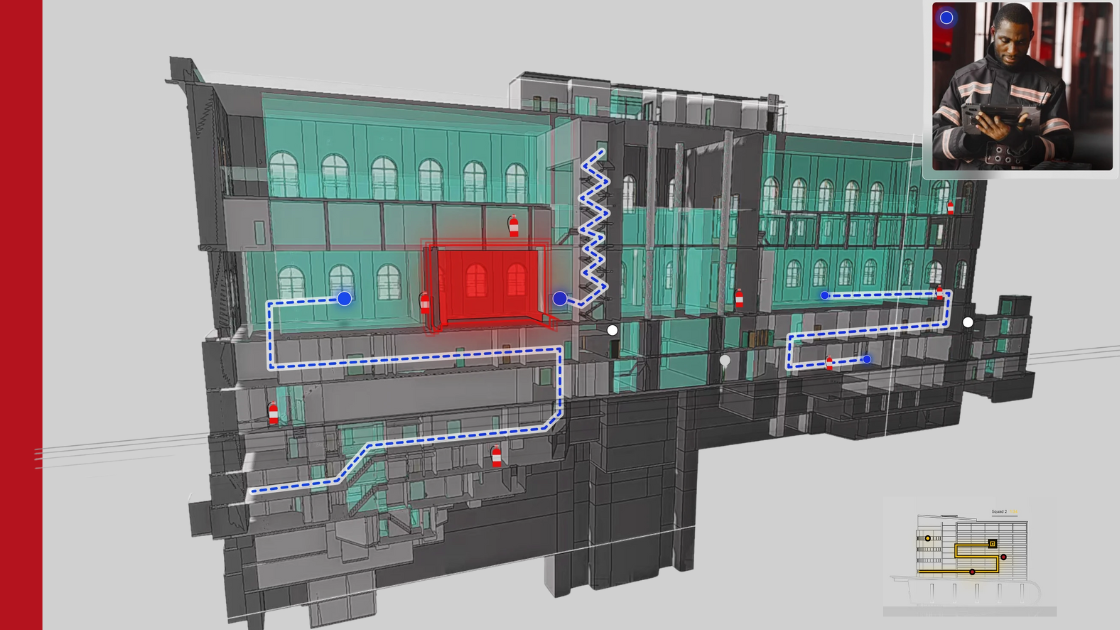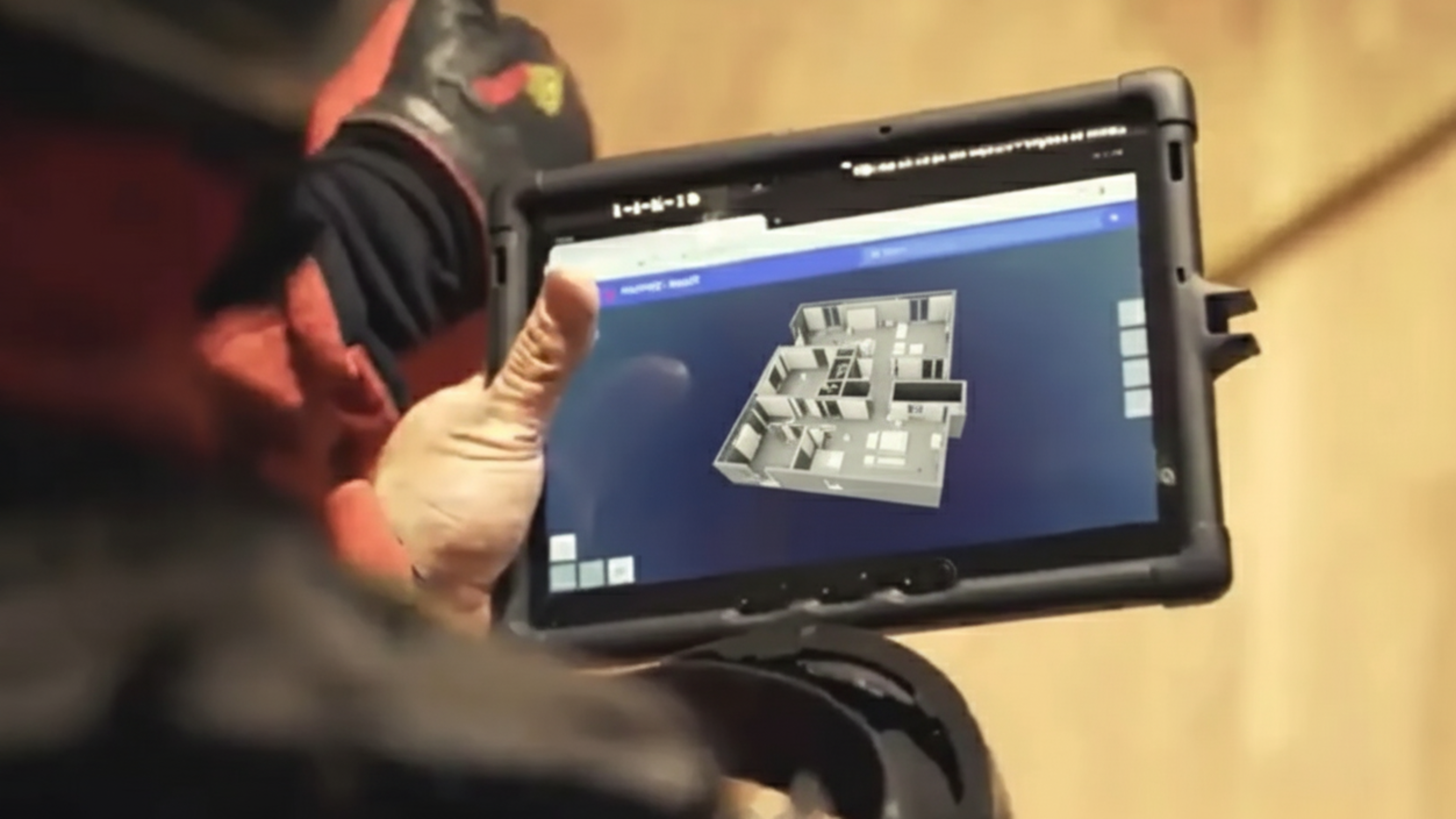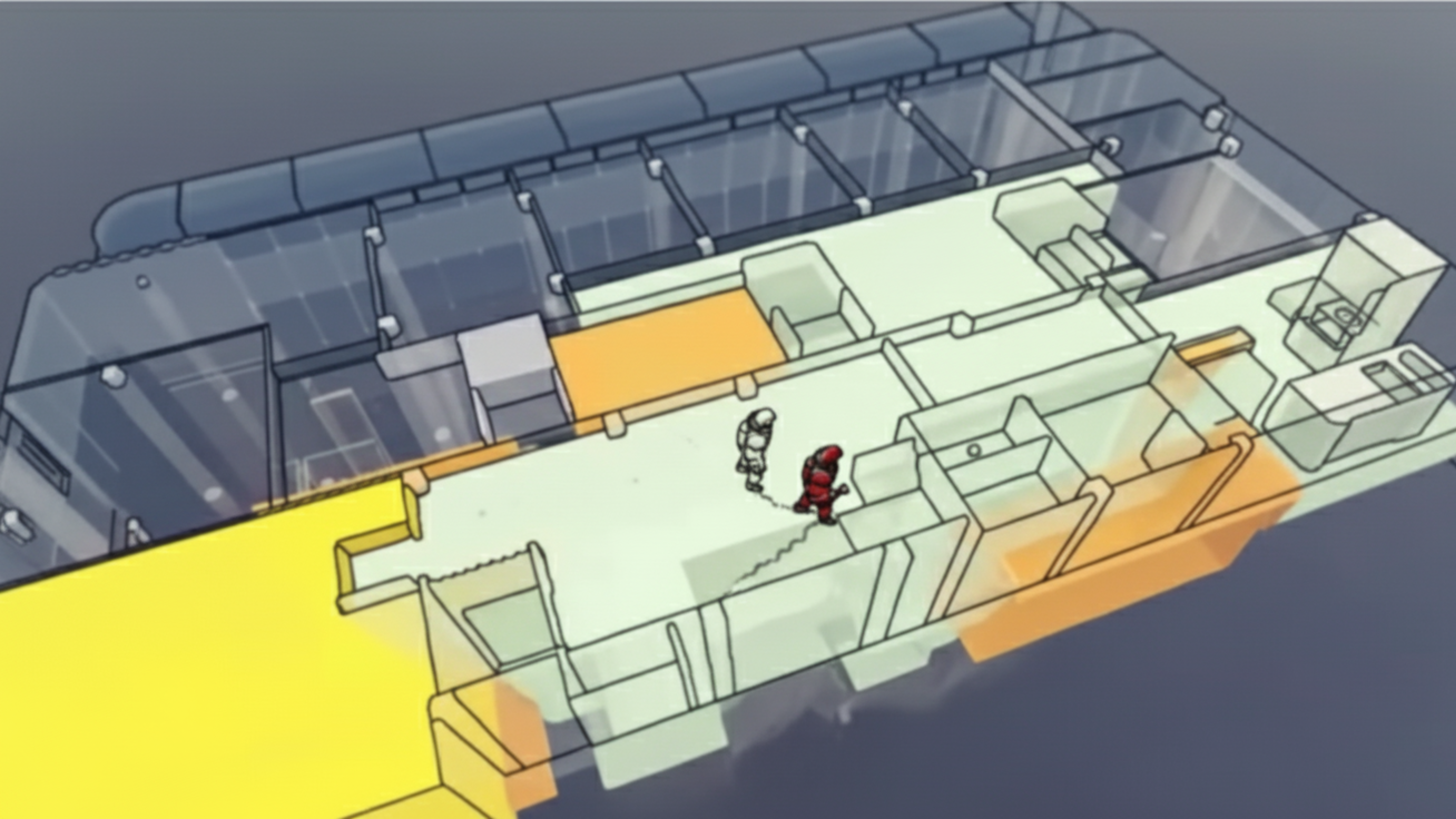How Monaco moved beyond Unreal Engine for emergency response?
A secure, browser-based 3D application integrates live IoT tracking, building metadata, and multi-user collaboration—accessible in firetrucks, command centers, and on-site.
Sector
Smart Cities
Country
Monaco
Use case
Emergency response & digital twin ops
4
weeks to first pilot
1
web link for access
5G
accessible with tablet

The Challenge: Turning Static 3D Into Real-Time Operational Awareness
In emergency response, seconds define outcomes.
The City of Monaco needed a way for its firefighters to see, understand, and act on live information — not static data or outdated maps.
The City’s existing 3D application, built with Unreal Engine, offered impressive visuals but lacked the functionality critical to field operations:
No real-time collaboration between command and field teams.
Local-only deployment, which meant no access on tablets or mobile devices used inside firetrucks or at the scene.
No live IoT integration, preventing tracking of firefighter positions in real time.
Without a cloud-native backbone, the application was powerful but disconnected — excellent for simulation, yet unsuited for real-world emergency use.
The challenge was clear: transform a static visualization tool into a live, collaborative operational twin that could run seamlessly over 5G, on any device, anywhere in the city.
The Solution: A Cloud-Native, Real-Time Digital Twin for Firefighter Coordination
To overcome these limitations, the City of Monaco selected 3dverse, a cloud-native, interoperable 3D operating system, purpose-built to unify data, devices, and people in real time.
The goal: develop a secure, browser-based digital twin web app accessible from tablets, laptops, and command center screens, enabling coordinated response between firefighters in the field and supervisors at headquarters.
Unlike traditional 3D engines, 3dverse required no local installation — just a browser and a connection. This made it ideal for 5G-enabled field operations, even from firetrucks and mobile command units.
Key Features: A Digital Twin Built for Action
1. IFC File Format Support & Metadata Integration
The application was built using open standards (IFC format) to ensure interoperability and transparency.
3dverse ingested detailed building models and associated metadata provided by third-party vendors, extracting structural and safety information critical to emergency planning.
Every visible 3D element — from doors and staircases to fire safety equipment and hazardous material zones — became accessible within the 3dverse environment.

2. Real-Time Firefighter Tracking Through IoT
A breakthrough component of the proof of concept was real-time indoor geolocation.
Firefighters wore connected bracelets linked to the building’s IoT sensor network.
These sensors transmitted live positional data to 3dverse, which dynamically visualized each firefighter’s location inside the 3D model of the Oceanographic Museum — the initial pilot site.
The result: command centers and on-site teams could see every movement, in real time, enhancing coordination and situational awareness.

3. Metadata Accessibility in Context
During operations, users could tap directly on any area or object in the 3D model to instantly view associated data:
location of fire extinguishers, sprinklers, and emergency exits
structural details and material composition
known hazard zones or high-risk areas
This contextual access replaced guesswork with actionable intelligence, allowing teams to make faster, better-informed decisions under pressure.
4. Real-Time Collaboration Across All Teams
3dverse enabled true multi-user collaboration: everyone—from field units to control room operators—could view, annotate, and interact with the same digital twin simultaneously.
This level of real-time synchronization transformed response management:
Command could guide firefighters visually through complex structures.
Field units could report live from tablets and see updates instantly.
All data flowed securely through the cloud, ensuring continuity and access from anywhere.
The Outcome: Faster Response, Smarter Decisions, Safer Operations
The prototype delivered a transformative leap in operational readiness for Monaco’s emergency services.
Enhanced situational awareness: Firefighters could navigate complex interiors with live positional tracking.
Improved coordination: Command and field teams shared the same spatial “ground truth” in real time.
Device-agnostic deployment: The application ran seamlessly on tablets, laptops, and command screens over 5G.
Safety gains: IoT data helped monitor movement and exposure, reducing risks to personnel.
For the Oceanographic Museum — one of Monaco’s most iconic and complex buildings — this digital twin became an essential tool for testing next-generation emergency protocols.
Scalability & Future Potential
The success of the Oceanographic Museum pilot has opened the path for broader deployment.
The 3dverse platform’s cloud architecture allows the same digital twin model to be expanded across Monaco’s key buildings — from cultural institutions to public infrastructure.
Future enhancements under consideration include:
Augmented reality (AR) overlays for situational data directly through field devices.
Integration with additional IoT data sources (temperature sensors, smoke detectors, air quality monitors).
Predictive analytics for automated incident assessment and evacuation simulations.
The flexibility of 3dverse ensures that every new module can be deployed instantly across devices, without the friction of traditional installations or engine reconfigurations.
The Takeaway
The Monaco firefighter digital twin initiative demonstrates how real-time 3D and IoT can converge to save lives, improve coordination, and enhance safety at scale.
By bridging Unreal Engine visualization with cloud-native interoperability, 3dverse turned static models into living, collaborative environments — accessible anywhere, anytime, on any device.
What began as a pilot for the Oceanographic Museum now points toward a broader vision: a connected, data-driven city where emergency response is powered by live digital twins.